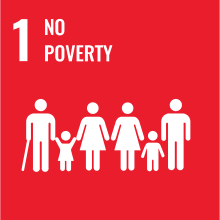The Rangarajan Committee, officially known as the Expert Group to Review the Methodology for Measurement of Poverty, was a committee appointed by the Government of India in 2012 to review and update the methodology for estimating poverty in the country. The committee was chaired by renowned economist C. Rangarajan and consisted of experts from various fields, including economics, social sciences, and statistics.

The primary objective of the Rangarajan Committee was to provide a more accurate and comprehensive approach to measuring poverty that would reflect changing consumption patterns and economic conditions. The committee aimed to address the limitations and criticisms of previous methodologies and to develop a more nuanced understanding of poverty.
Key features and contributions of the Rangarajan Committee’s recommendations include:
- Caloric and Nutritional Requirements: The committee focused on assessing the minimum caloric and nutritional requirements for individuals and households. It recognized that poverty is not solely about calorie intake but also about ensuring adequate nutrition for well-being.
- Threshold of Non-Food Expenditure: The Rangarajan Committee introduced the concept of a threshold of non-food expenditure that households should meet to be considered above the poverty line. This approach aimed to account for essential non-food expenses such as health, education, and clothing.
- Mixed Reference Period (MRP): Similar to the Tendulkar Committee, the Rangarajan Committee recommended using the Mixed Reference Period (MRP) approach for data collection. MRP involves collecting information on both past 30-day consumption and past 365-day consumption to provide a more accurate representation of household expenditure.
- Separate Poverty Lines: The committee recommended separate poverty lines for rural and urban areas, recognizing the differences in consumption patterns and cost of living between these two settings.
- Updating Poverty Lines: The Rangarajan Committee updated the poverty lines based on the new methodology. It suggested higher poverty lines compared to previous estimates, reflecting a more realistic assessment of the cost of living and consumption patterns.
The recommendations of the Rangarajan Committee were aimed at providing a more comprehensive and accurate picture of poverty in India. The committee’s work emphasized the importance of considering both food and non-food consumption, as well as addressing the nutritional needs of individuals and households. However, it’s important to note that the committee’s recommendations also sparked debates and discussions, particularly regarding the determination of poverty lines and the methodology for estimating poverty in a complex and diverse country like India.